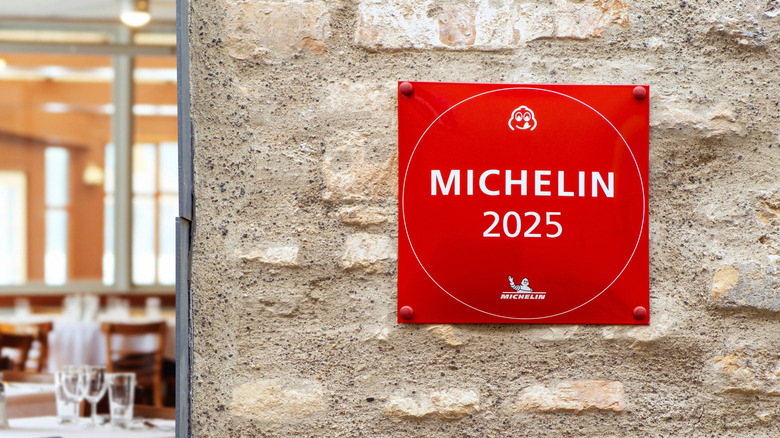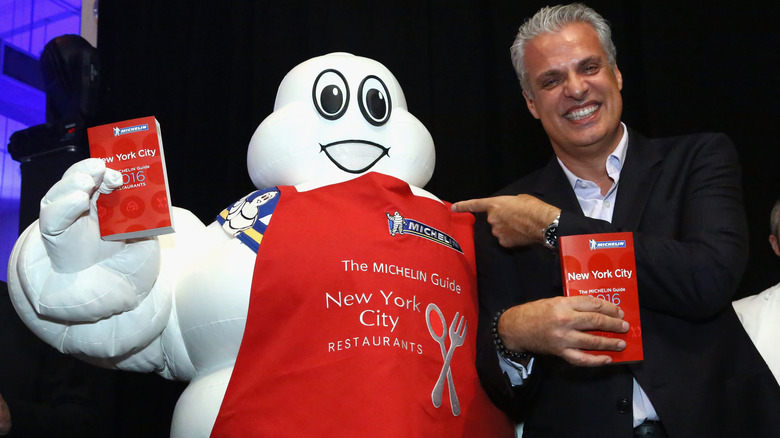Yes, Michelin Stars Are Connected To The Tire Brand. Here's How
Being awarded a Michelin star is the most famous and esteemed culinary honor a restaurant can achieve. Since the prized culinary recognition has nothing to do with cars, you might think it's just a coincidence that it shares its name with a tire company. But Michelin stars are actually awarded by the French tiremaker's Michelin Guides, and the connection dates back to the early days of the automobile industry.
When French brothers Andre and Edouard Michelin began their tire company in 1889, there were fewer than 3,000 automobiles in France. The two came up with the idea of creating a small travel guide that they hoped would encourage motorists to spend more time on the road, which would in turn boost tire sales. The free Michelin Guide was launched in 1900 with information including maps, travel planning advice, maintenance tips like how to change a tire, and where to eat, stay, and get gas. The brothers began charging for their guide two decades later, in 1920.
The Michelin Guide didn't start giving restaurants star ratings until 1926, with only one star available at the beginning. The three-star system that remains today was introduced five years later, in 1931. The guide lets the stars speak for themselves, as the reviews for the restaurants are just two or three sentences long. As prestigious as the honor is, not everyone may agree with it, as some Michelin-star restaurants actually have poor reviews.
What it takes to get a Michelin star
The criteria for awarding Michelin stars were first made public in 1936. They are: ingredient quality; flavor and cooking technique mastery; chef's expression of their personality; value for the price; and consistency across Michelin's anonymous reviewers' (called "inspectors") visits. Decor and service aren't a factor. Inspectors visit on different days of the week, at different times of the day, and in different seasons to judge consistency. After several of them have eaten at a restaurant, they decide on a star rating together.
One star means the food is high quality and the restaurant is a good place to stop for a meal. A two-star rating indicates excellent food with more unique flavors that's worth going out of your way for. Three stars are awarded for exceptional cuisine, described by one inspector as "elevated to an art form" (per Michelin). These restaurants merit a special trip, with fewer than 160 of them in total.
Michelin does reviews in more than 30 nations on three continents. Home country France has the most Michelin-star restaurants as of 2025 with 636, followed by Japan with 387 and Italy with 381. The U.S. has 234 in sixth place. Tokyo is the city with the most Michelin-star restaurants in the world, ahead of second-place Paris. Although restaurants get Michelin stars, not chefs, their executive chefs still earn prestige. The chef who has the most Michelin stars of all time is the late Joël Robuchon with 31, ahead of fellow French chef Alain Ducasse's 21. British celebrity chef Gordon Ramsay is third, with 17 stars over his career.


